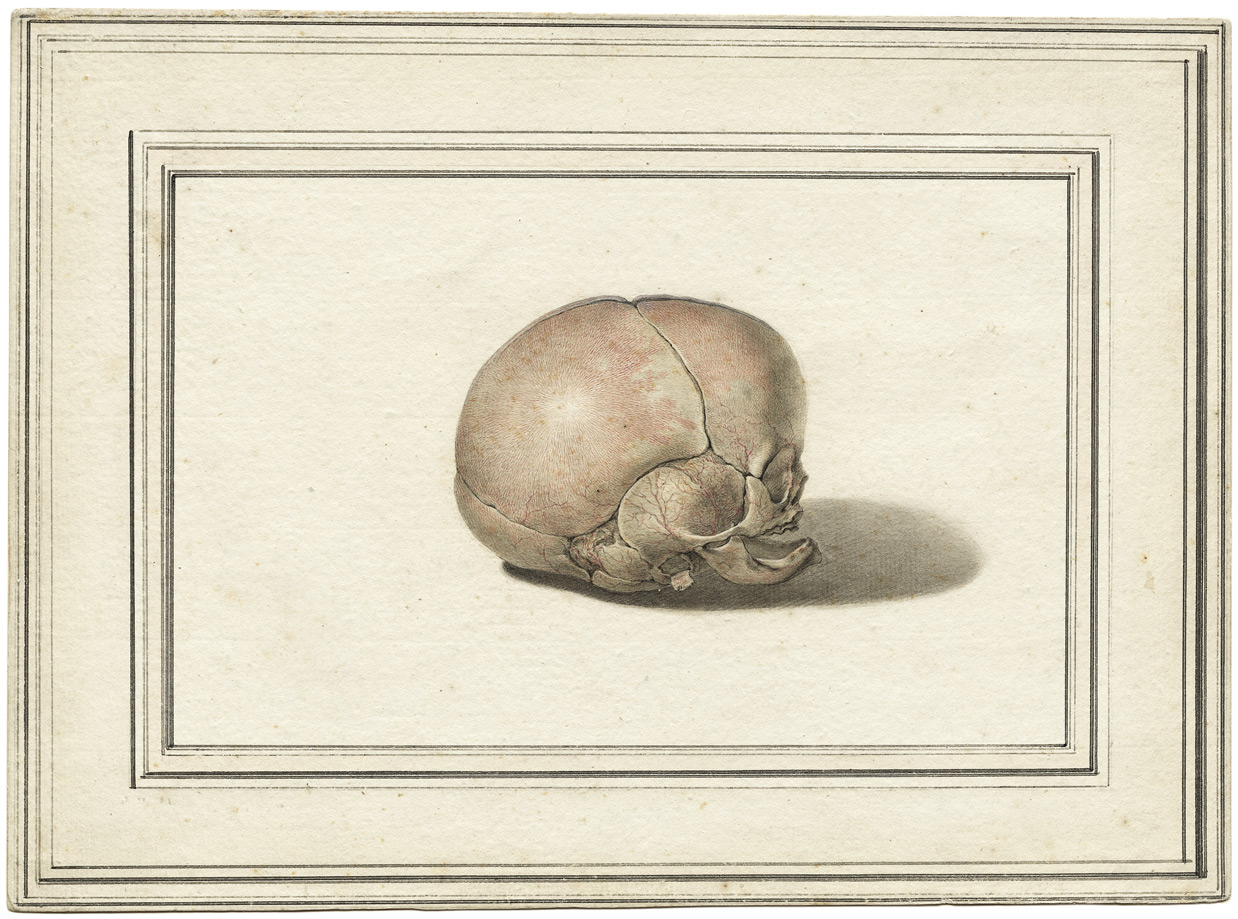Loading the page ...
Adam Friedrich Oeser
(1717 Preßburg – 1799 Leipzig)
Skull of a Seven-month-old Child. Watercolour and brush in grey, the subject framed by a multiple borderline in watercolour and pen and black ink. 21.1 x 28.9 cm. Circa 1791.
Adam Friedrich Oeser, a painter, draughtsman, etcher and sculptor, received his artistic training in Vienna from Jacob van Schuppen, Daniel Gran and Martin van Mytens the Younger. He was introduced to sculpture by his friend, Raphael Donner, who also advised him to study classical art. From 1739 Oeser was active in Dresden, where he distinguished himself primarily as a decorative painter. His close acquaintance with the archaeologist and art writer, Johann Joachim Winckelmann, who lodged with Oeser from 1754 and received drawing lessons from him, proved to be of momentous import. Winckelmann’s epoch-making essay Gedanken über die Nachahmung der griechischen Werke in der Malerei und Bildhauerkunst (Thoughts on the Imitation of Greek Works in Painting and Sculpture) reflects the discussions on art theory that were held in Oeser’s house. Forced to leave Dresden by the Seven Years War, Oeser ultimately settled in Leipzig in 1759, where he was to live and work until his death. In 1764 he was appointed director of the Academy founded shortly before by Christian Ludwig Hagedorn and simultaneously assigned to the position of painter at the court of the Elector. Oeser became a prolific painter of ceilings and stage scenery in Leipzig. A wellrespected figure in the intellectual and cultural life of the city, he was also influential as a teacher. His most famous pupil was undoubtedly Johann Wolfgang von Goethe, to whom he gave drawing lessons between 1766 and 1768. Oeser later remained on friendly terms with Goethe, visiting him Weimar on several occasions and receiving numerous commissions thanks to his intercession.
Oeser demonstrates loving attention to detail and great sensitivity as a draughtsman in his depiction of the skull of a sevenmonth-old child. The finely ramified blood vessels on the forehead and temples and the reddish hue of the little skull, on which the impression left by the scalp is still visible, are rendered with a meticulousness bordering on the reverential, manifesting a scientific interest typical of the Age of Enlightenment. The effective mise-en-page against an empty background gives the work a sense of strength, solemnity and tranquillity. Figuratively speaking, the little skull acts as a metaphor of the unpredictability of life. In humble realization of this, Oeser calls to mind a newborn child, whose life has been snatched away overnight. The carefully drawn borderline is designed to deceive the eye (trompe-l’oeil) and draw the observer’s attention to the child’s skull.
The drawing served as a model for an etching produced in 1791 by Johann Friedrich Bause, an engraver friend of Oeser’s who also worked in Leipzig (Keil 22). The present impression of the second state, printed in red, reveals the use of a very subtly differentiated stippling technique, which brilliantly transports the outstanding draughtsmanship of the original to the medium of graphic reproduction. Apart from the present version other variants in brown are known to exist, as are multi-coloured proofs in crimson and yellow.
Contact us for further information